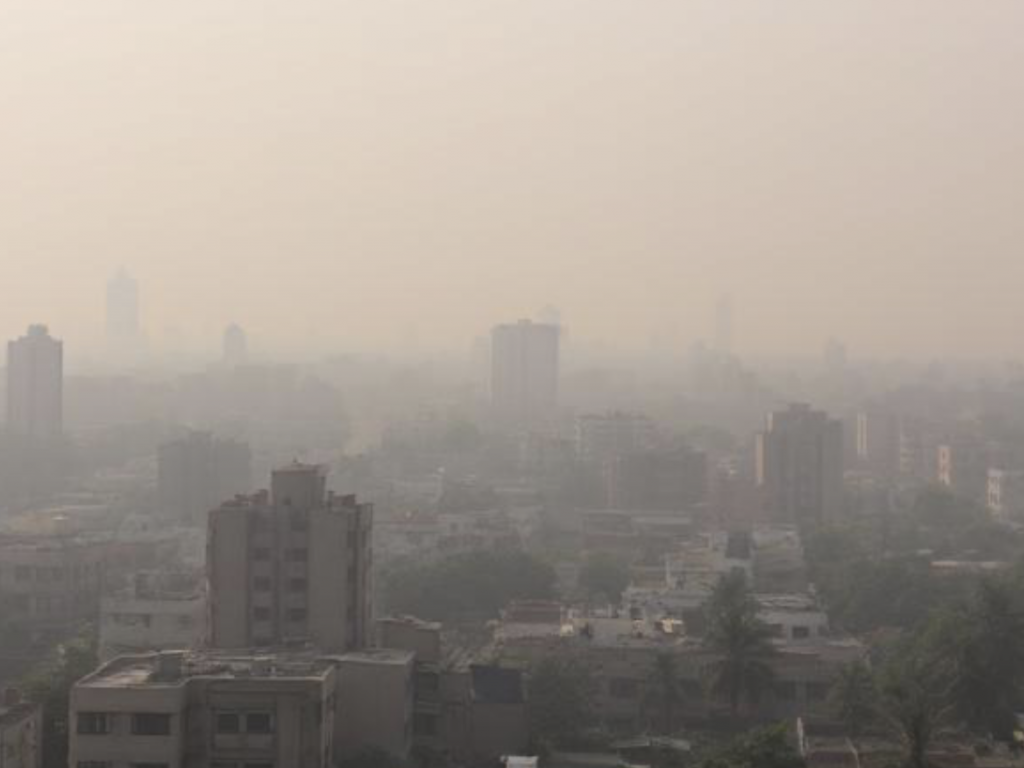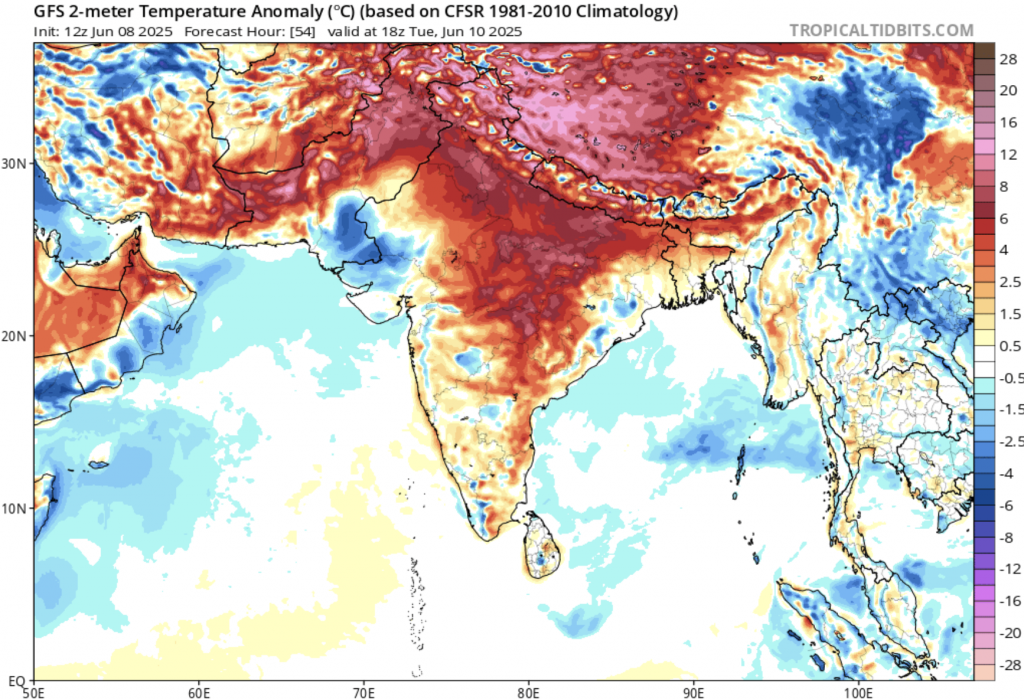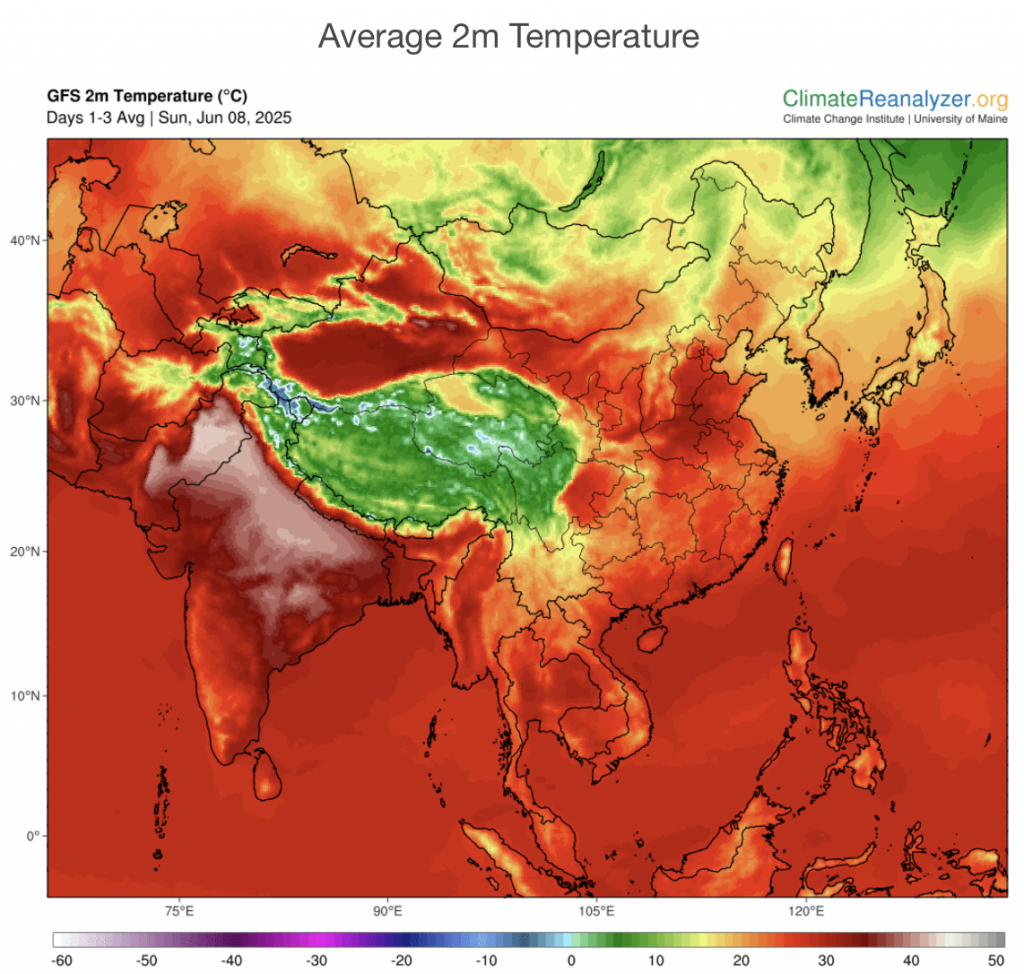
A brutal and persistent heatwave is currently scorching much of Northern India, with temperatures over the past three days (June 6th to 8th) reaching dangerously high levels across multiple states. In Delhi, temperatures climbed to 44.8°C on June 7th, the second-highest of the season so far, and about 5–6°C above the normal June average. Other northern cities like Jaipur (44.5°C), Chandigarh (43.2°C), and Lucknow (44.1°C) have all reported severe heatwave conditions, with “red alert” warnings issued by the India Meteorological Department (IMD) across Rajasthan, Haryana, Punjab, and parts of Uttar Pradesh. Even nighttime temperatures are failing to offer relief, with minimums hovering around 32–34°C in many urban centers—significantly higher than the seasonal norm of 26–28°C.

Compounding the oppressive heat are unusually high dew points, which have lingered in the 25–28°C range in parts of Uttar Pradesh and the Delhi NCR. These levels indicate extreme humidity and reduce the body’s ability to cool through sweat evaporation, pushing the wet bulb temperatures—an index of heat stress—into the danger zone. For example, in Kanpur and Bareilly, dew points have surged to 27°C, making the 44°C daytime highs feel even more hazardous. This combination of heat and humidity poses severe health risks, especially for outdoor workers and those without access to air conditioning.

The heatwave follows an already scorching spring in Northern India, with April and May both recording above-average temperatures. According to IMD data, Delhi and Lucknow experienced their warmest spring season in over a decade, with April mean maximum temperatures in Delhi clocking in at 39.1°C—around 3.5°C above normal. The lack of meaningful pre-monsoon showers further exacerbated the warming trend, leaving soils parched and urban heat islands intensified. As a result, this early June heatwave is hitting already vulnerable communities harder than usual, especially in densely populated cities where heat retention from concrete and asphalt is more pronounced.
Drought conditions are also intensifying in the affected areas, particularly in western Uttar Pradesh and Rajasthan. Rainfall deficits of 50–70% compared to seasonal norms have been reported in several districts. Groundwater levels in parts of Haryana and Delhi have dropped noticeably, raising concerns about water scarcity as the heatwave persists. The high temperatures are accelerating evaporation rates and drying out croplands, placing added strain on agricultural communities already facing stressed irrigation resources.

Relief from the extreme heat is expected, but not immediately. Forecast models suggest that temperatures will remain elevated through June 11th, with highs still topping 43–45°C in key urban centers like Delhi, Agra, and Jaipur. Some moderation may begin around June 12th as a weak western disturbance and possible monsoonal winds bring cloud cover and isolated showers to parts of northern India. However, significant cooling is not expected until the southwest monsoon begins to advance more decisively into the region—likely not until the third week of June. Until then, the IMD continues to urge precautions against heat-related illness, including hydration, limited sun exposure, and the use of cooling centers where available.


























